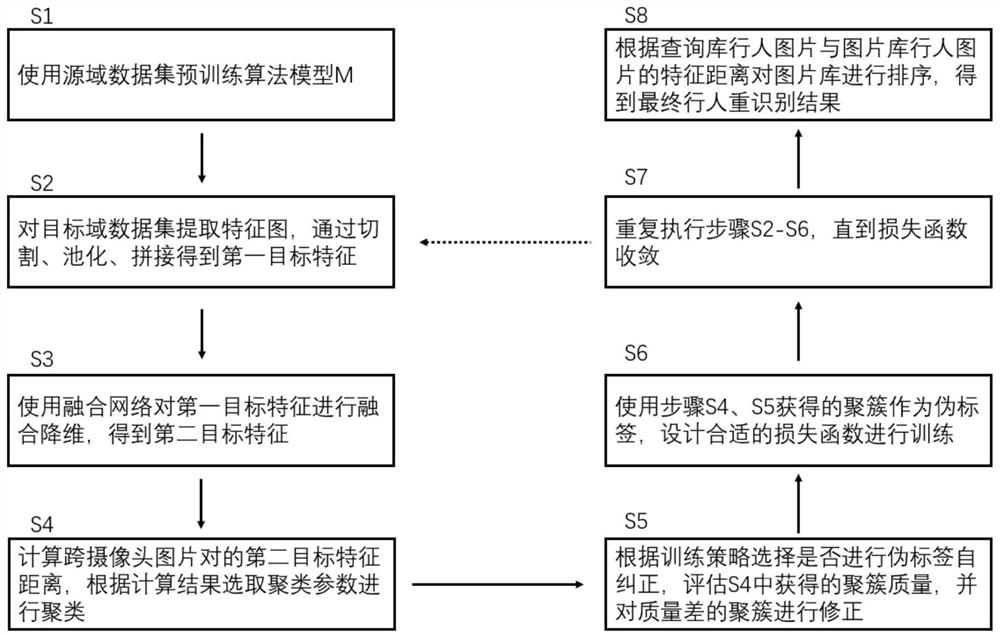Unsupervised pedestrian re-identification method based on pseudo-label self-correction
A person re-identification, unsupervised technology, applied in the field of computer vision, can solve the problems of relying on pseudo-labels, pseudo-labels being sensitive to noise, etc.
- Summary
- Abstract
- Description
- Claims
- Application Information
AI Technical Summary
Problems solved by technology
Method used
Image
Examples
Embodiment
[0073] In this embodiment, as figure 1 The process shown is implemented. As shown in the figure, an unsupervised pedestrian re-identification method based on pseudo-label self-correction includes the following steps:
[0074] The specific implementation process of step S1 is as follows:
[0075] Construct the source domain dataset, target domain dataset, target domain test set and algorithm model M, and use the source domain dataset to pre-train the algorithm model M. Among them, the step S1
[0076] Construct the source domain dataset: Collect all pedestrian pictures from different surveillance cameras in the source domain scene, and mark each pedestrian picture with a specific pedestrian ID by manual or machine marking. The pedestrian ID corresponding to each pedestrian picture is The label of the pedestrian image, after the labeling is completed, the obtained source domain data set ends with {X s ,Y s ,P s}, where X s Denotes all pedestrian images in the source domain...
PUM
 Login to View More
Login to View More Abstract
Description
Claims
Application Information
 Login to View More
Login to View More - R&D
- Intellectual Property
- Life Sciences
- Materials
- Tech Scout
- Unparalleled Data Quality
- Higher Quality Content
- 60% Fewer Hallucinations
Browse by: Latest US Patents, China's latest patents, Technical Efficacy Thesaurus, Application Domain, Technology Topic, Popular Technical Reports.
© 2025 PatSnap. All rights reserved.Legal|Privacy policy|Modern Slavery Act Transparency Statement|Sitemap|About US| Contact US: help@patsnap.com



